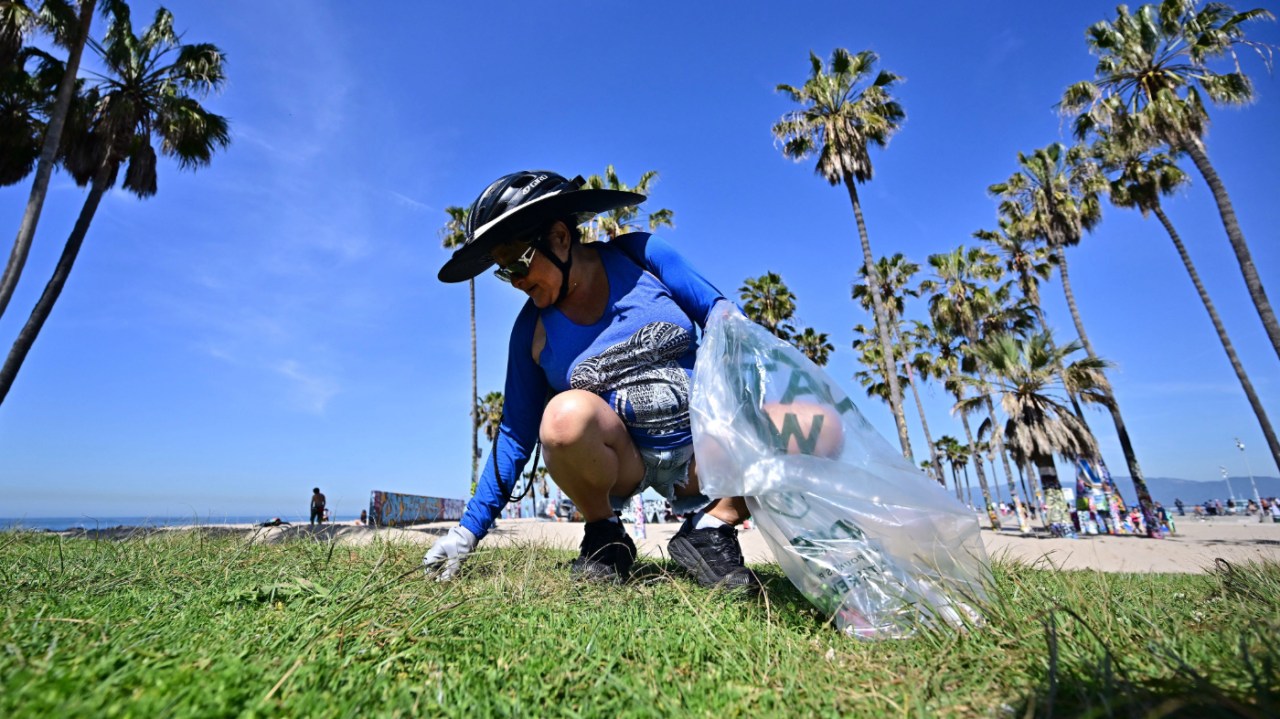California’s 840 miles of coastline are the gateway to stunning underwater scenery that only a few have ever seen. Kelp forests, deep-sea mountains, and swirling ocean currents shelter a variety of plant and animal species, from playful sea otters and sea turtles to migrating tuna, gray whales, humpback whales, minke whales, and other whale species that call the vast Pacific Ocean home.
Although they are mostly invisible, these marine habitats play an important role in keeping our air and water clean, absorbing excess carbon from the atmosphere, and providing food for millions of people. When they function properly, people, animals and our fishing and tourism economies thrive.
But looming threats to our beautiful and important marine ecosystems are becoming apparent. We’ve all seen images of sea turtles chewing on plastic bags – mistaking them for food – and of distressed whales and seals becoming entangled in fishing gear.
The plastic pollution problem Californians have grappled with for years is now a crisis: We spend more than $520 million and thousands of volunteer hours each year cleaning up plastic from the state’s iconic beaches. Residents of our coastal communities have seen our oceans hit ground zero for the plastic pollution crisis.
Globally, an estimated 11 million tons of plastic enter the ocean every year, and researchers expect this number to triple in the next two decades. The United States is the world’s largest producer of plastic waste (both total and per capita) and one of the largest producers of virgin plastic resin, the basic material used to make plastic bags, bottles, cigarette butts and more.
It’s time to admit what has been obvious to scientists and beach cleanup volunteers for years: we produce too much plastic.
Volunteer beach cleanups are important because they help limit damage to our coastlines and beaches. But they don’t stop plastic pollution from getting there in the first place. The only way to truly solve this crisis is to address the problem at its source, starting with reducing the amount of plastic produced.
Plastic harms all marine ecosystems, not just those that volunteers can see and touch. Plastic can be found in remote areas of the ocean and in the most remote protected areas on land – places that volunteers will never see, let alone attempt to clean up. Plastic pollution is everywhere and can be found in our body tissues and even breast milk.
Experts say that to effectively curb plastic pollution, we must eliminate at least half of the world’s single-use plastic production by 2050. Many other countries have been slow to adopt provisions strong enough to meet this urgent requirement.
At the federal level, progress in reducing plastic use has been limited at best. While we have already seen the Department of Home Affairs phase out all single-use plastic on public lands, wider action is needed.
That’s why in October, one of us sponsored the Break Free from Plastic Pollution Act with Democratic Senator Jeff Merkley of Oregon. The legislation is a bold move to reduce plastic use nationwide by strengthening regulations to reduce single-use plastics, supporting reuse and refill systems and improving waste management systems by holding producers accountable.
Unfortunately, in this deeply divided Congress, the bill is unlikely to pass.
In the absence of meaningful action from the federal government, some states have stepped up to provide leadership. In particular, California has recognized this urgency and passed SB54 in 2022, requiring a 25% reduction in single-use plastic products, the strictest plastic policy in the world. The law itself would eliminate nearly 23 million tons of single-use plastic — nearly 26 times the weight of the Golden Gate Bridge.
But we can’t wait for every state and district to follow California’s lead — especially knowing that many of them won’t take action.
We must decide whether we are serious about protecting our oceans, lands, communities and bodies from the scourge of plastic pollution, and then set our priorities accordingly. Federal legislation should be a priority. Another is a strong global treaty.
When we join leaders from around the world in Ottawa later this month for negotiations on an international plastics treaty, we will encourage negotiators to look to California as a model for taking strong steps to reduce plastic production.
Limiting the seemingly endless supply of single-use plastic, polluting every corner of the planet, is the only effective way to protect ecosystems, communities and our own health from the global plastic pollution crisis.
The Break Free from Plastic Act and California’s leadership provide us with a vision of what the future will look like once our priorities are in order. Now it is time for everyone at the local, federal and international levels to build on this foundation. Everyone must roll up their sleeves and do their part.
Rep. Jared Huffman (D-Calif.) represents California’s 2nd Congressional District. He has introduced several bills in Congress aimed at reducing plastic pollution, including the Break Free from Plastic Pollution Act.
Janis Sayles Jones is the CEO of the Ocean Conservancy.
Copyright 2024 Nexstar Media Inc. All rights reserved. This material may not be published, broadcast, rewritten or redistributed.
#California #lead #global #plastic #pollution #crisis
Image Source : thehill.com
